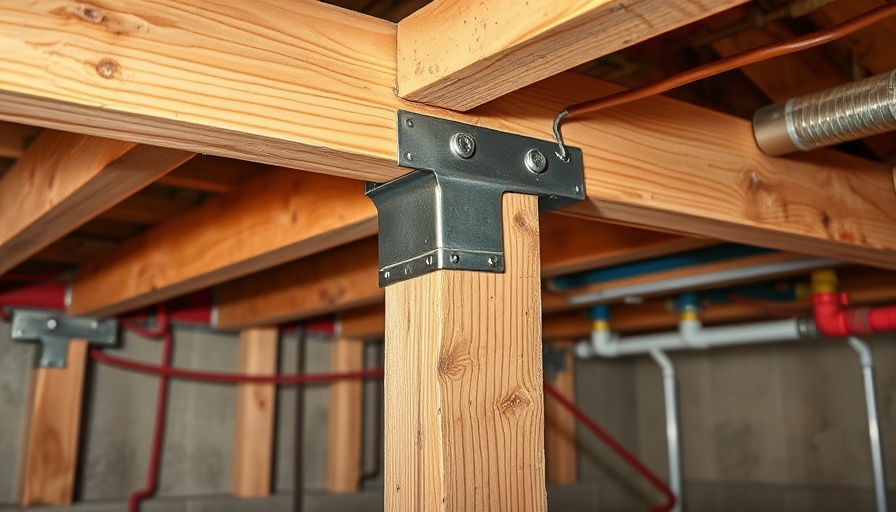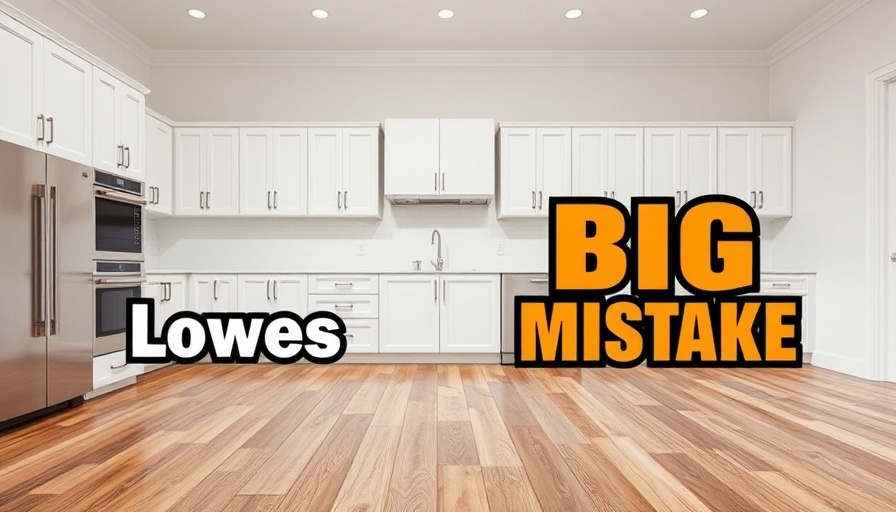
Understanding the Dangers of Notched Floor Joists
Notched floor joists can significantly compromise the structural integrity of a home. When joists are notched—intentionally or accidentally—they lose their ability to bear weight properly, which can lead to dangerous sagging and even collapses. In a recent example explained by Scott from Everyday Home Repairs, a 2x8 floor joist was flagged during a home inspection due to such a notch, measured at 5 inches by 3 inches. This situation highlights the importance of addressing structural issues before they escalate into larger problems that could jeopardize safety and increase repair costs.
In Quick DIY Repair for A Failed Inspection: Notched Floor Joist, the discussion dives into effective repair methods for compromised joists, exploring key insights that sparked deeper analysis on our end.
Effective DIY Solutions for Floor Joist Repairs
For homeowners faced with a similar predicament, the good news is that there are viable DIY solutions available. Scott introduced an innovative repair strap designed specifically for notched joists. This strap measures 1.5 inches wide and provides ample support with multiple fastener holes that help restore the structural integrity of the joist. By following a simple installation method—ensuring to drill pilot holes to prevent splitting—the repair can often be completed in under 15 minutes. This approach not only saves significant time and cost compared to hiring a contractor but also empowers homeowners to take control of their home maintenance.
Measuring Your Notch: Choosing the Right Repair Strap
One key step in executing this DIY repair successfully is accurately measuring your notch to select the appropriate strap size. The product Scott discussed can accommodate notches up to 6 inches wide with sufficient clearance above the notch, pivotal to ensure a successful repair. For joists with larger notches, corresponding larger straps are available. Homeowners can refer to product specifications via links provided in video descriptions to find the right fit for their specific needs.
Cost-Effective Home Maintenance: The Importance of Self-Reliance
One of the most significant takeaways from Scott's guidance is the emphasis on cost-effective solutions in home maintenance. Hiring contractors can be prohibitively expensive, especially when repairs involve structural elements like floor joists. By utilizing affordable products such as repair straps, homeowners can address issues proactively without breaking the bank. This not only maintains the value of their property but promotes a sense of self-reliance and hands-on involvement in home upkeep.
Exploring Alternatives for Larger Repairs
For those facing more severe structural concerns, Scott points out that various repair solutions exist, such as side plates that can reinforce joists from above without compromising their ability to hold weight. These products offer flexibility depending on the specific damage and location within the home. Encouraging exploration of these alternatives empowers homeowners to make informed decisions about their repairs and understand the array of options available before resorting to professional help.
Inspiration Beyond Challenges: Embracing DIY Projects
Lastly, Scott's video serves as a reminder of the opportunities inherent in DIY projects. Homeowners living through renovations or repairs can channel their frustrations into productive endeavors, transforming house maintenance into a creative outlet. Not only can they tackle necessary repairs, but they can also feel gratified in knowing they've made their homes safer and more stable through their efforts. By bearing witness to how quickly and efficiently one can resolve even a critical issue like a notched floor joist, more people will find the motivation to engage in home improvement projects, cultivate skills, and ultimately cultivate a deeper connection with their living space.
In Quick DIY Repair for A Failed Inspection: Notched Floor Joist, we explored how sociable and informative content can shine a light on essential home repair techniques, inspiring homeowners to take action and bolster their home's safety and value. As you delve into your own DIY projects, remember the tools and techniques discussed here, and do not hesitate to invest time in learning more about home maintenance.
 Add Row
Add Row  Add
Add 




Write A Comment